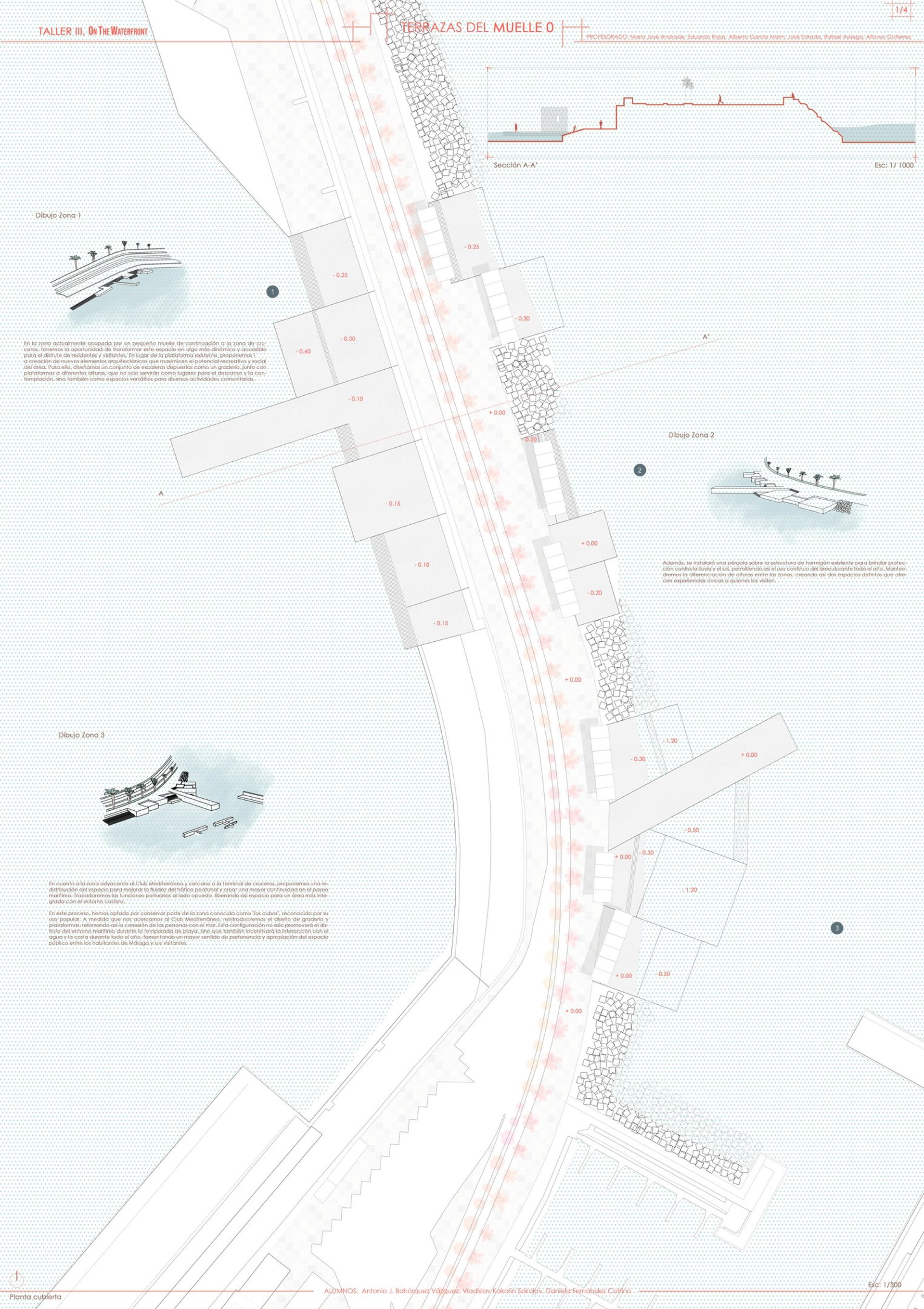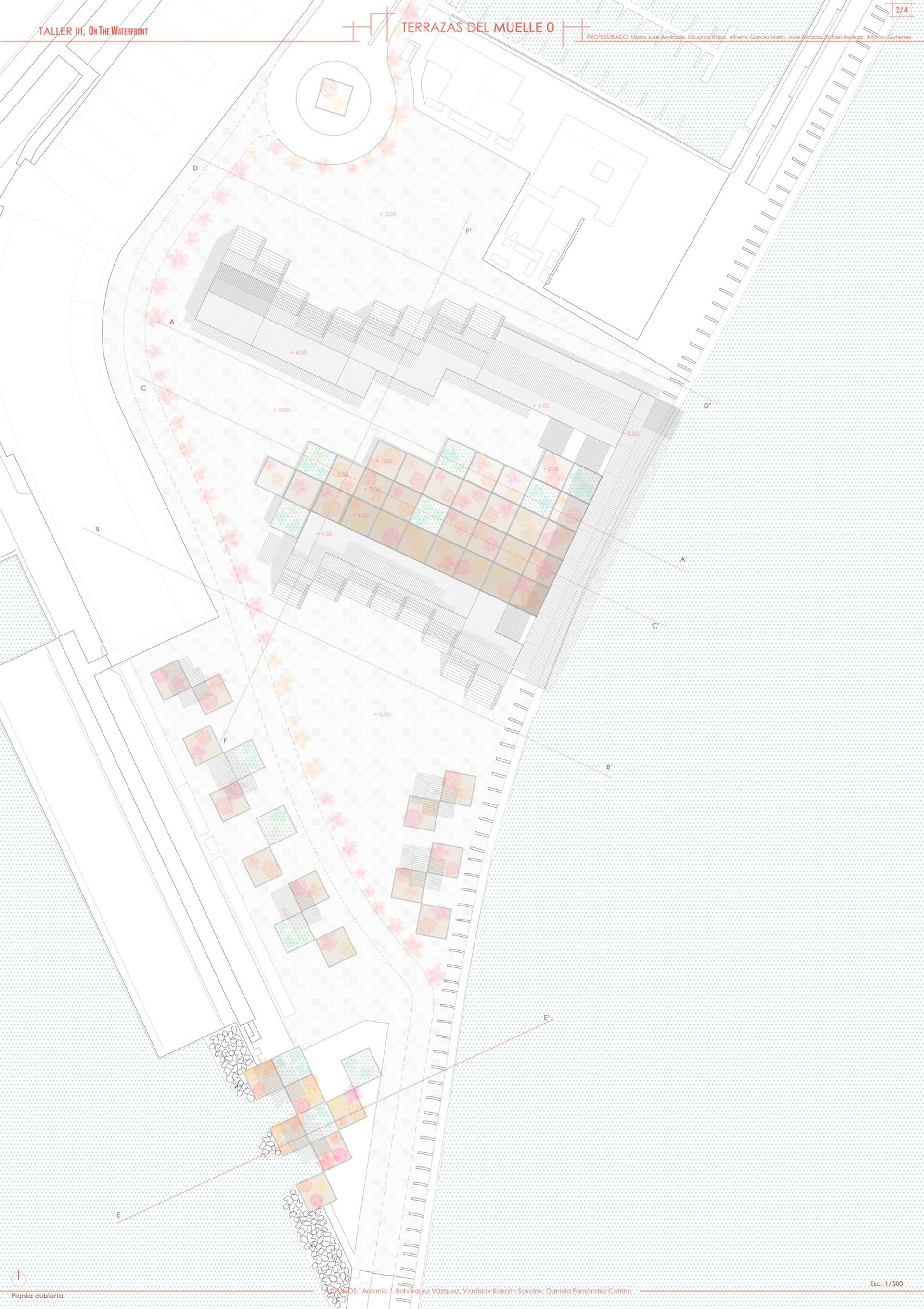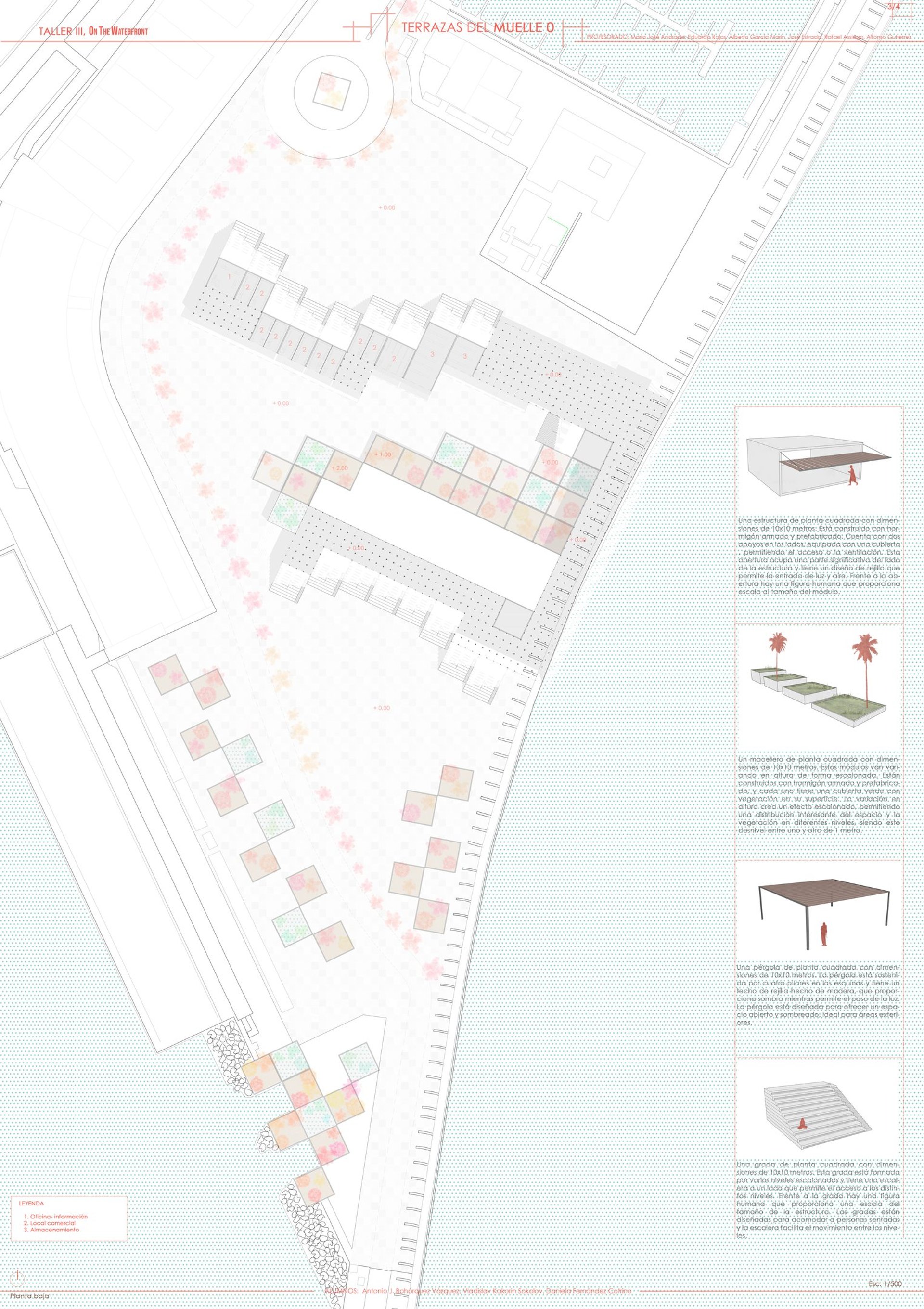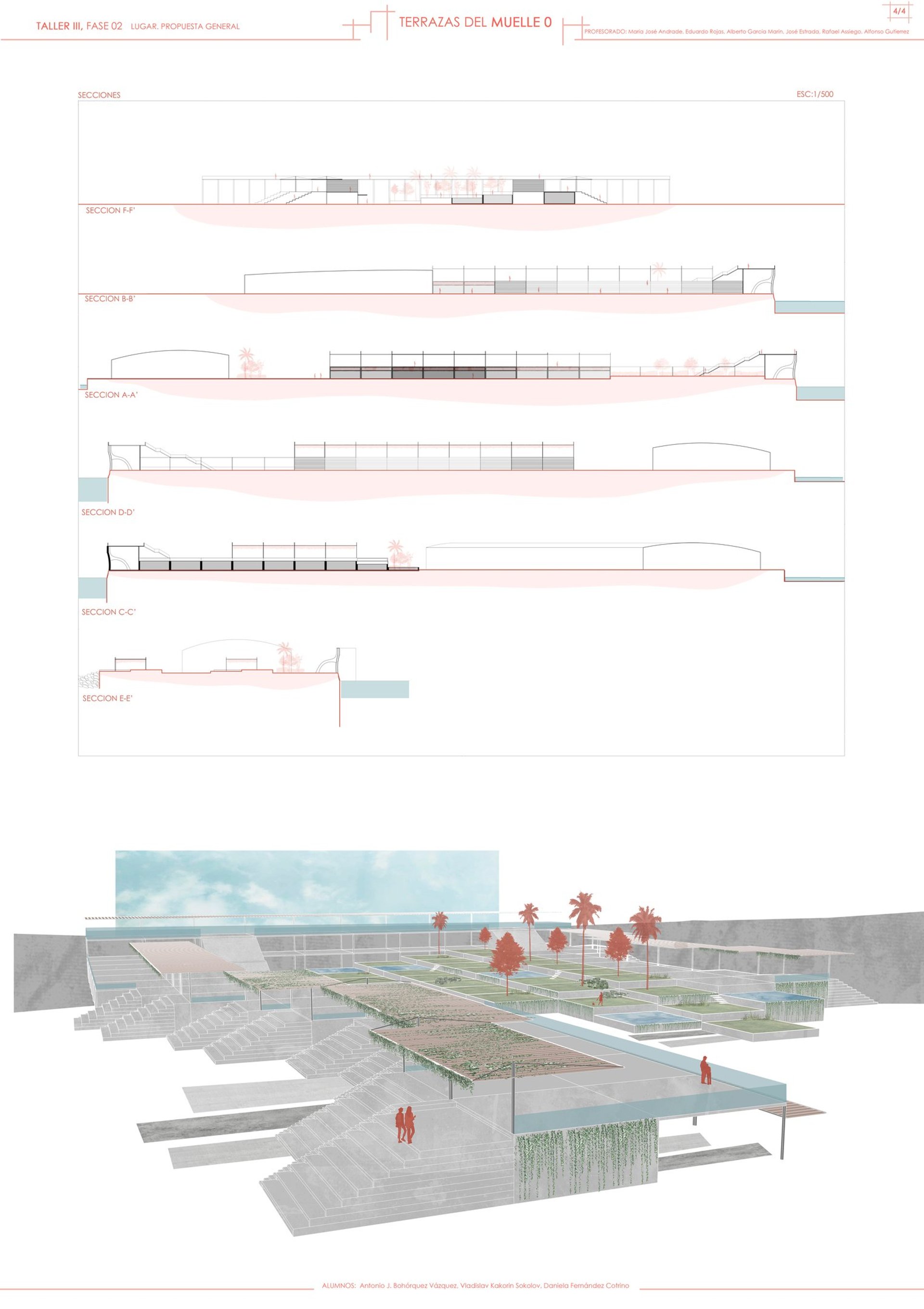Dock 0 Terraces
Throughout the development, you will find explanatory diagrams, detailed floor plans, construction sections, renders, and presentation panels illustrating the layout, structural system, and applied sustainability strategies.
TEXTOESQUEMASPLANOSIMÁGENESPANELES
Location and Modules
In the area currently occupied by a small extension pier of the cruise terminal, we have the opportunity to transform this space into something more dynamic and accessible for both residents and visitors. Instead of the existing platform, we propose the creation of new architectural elements that enhance the recreational and social potential of the area. To achieve this, we designed a set of three levels, stacked like a grandstand, along with platforms at different heights. These elements will not only serve as places for rest and contemplation, but also as versatile spaces for various community activities.
Additionally, a pergola will be installed over the existing concrete structure to provide protection from rain and sun, allowing the area to be used throughout the year. We will maintain the height differentiation between the three zones, thus creating distinct spaces that offer unique experiences to visitors.
Regarding the area adjacent to the Club Mediterráneo and near the cruise terminal, we propose a revitalization of the space to improve the flow of pedestrian traffic along this coastal strip, which is currently obstructed by a series of misplaced structural elements aligned along the promenade. We will relocate the port-related functions to the opposite side, thereby freeing up space for an area more integrated with the coastal environment.
In this redesign, we aim to preserve part of the area known as ‘Los Cubos’, which is recognized for its popular use. As we approach the Club Mediterráneo, we propose greater spatial and programmatic continuity through open spaces designed for rest and contemplation, encouraging enjoyment of the coastal environment in its natural state. The height differentiation will be maintained by incorporating a beach-style tiered structure, without interfering with the sense of continuity and direct contact with the river, fostering a greater sense of belonging to the place and making the waterfront a more vibrant and visited area.
Port
The Port of Málaga will be revitalized through the installation of multifunctional modules that will enhance the experience for both visitors and the local community. These modules, designed to serve specific functions, will provide aesthetic and functional benefits to the port environment. The planter module, dedicated to housing native plants, will improve the natural surroundings and air quality, while also offering a visually pleasant appearance. The storage module will facilitate the organization and operational efficiency of the port by allowing for the safe storage of tools and nautical equipment.
The walkable module will offer an elevated platform, allowing visitors to enjoy panoramic views of the port and offering a new perspective of the surroundings. Meanwhile, the grandstand module, featuring tiered seating, will provide a comfortable space for events and cultural activities, enhancing leisure options within the port area. Lastly, the canopy module, equipped with a sunshade to provide shelter from the weather, will increase visitor comfort under various weather conditions. These modules will transform the Port of Málaga into a more accessible, functional, and attractive space, benefiting both residents and tourists.
Text
Diagrams
The diagrams illustrate the modular layout, prefabricated system, and natural ventilation strategy - optimizing both comfort and energy efficiency.
Analysis and conclusions
This modular project successfully blends functionality and aesthetics, featuring tiered elevations (4m and 8m) to maximize views of both the sea and Málaga. The southern bleachers attract the most visitors, especially at sunset, while the eastern viewpoint (8m) draws crowds but suffers from congestion. Wooden pergolas provide aesthetic appeal and shade, though they require maintenance due to marine exposure. By combining materials like concrete and wood, the space harmoniously merges urban and natural elements, creating a popular local and tourist attraction. Key takeaways: strong marks for versatility and visual impact, but improvements are needed in crowd flow management and weather-resistant materials for coastal durability.
—In essence: an architectural success with optimization opportunities.

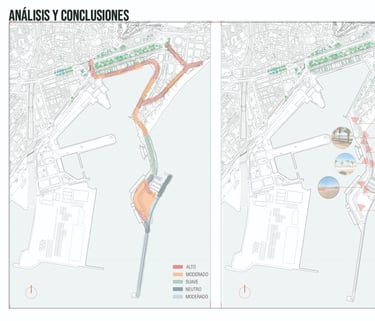
Modules
The diagrams illustrate the modular layout, prefabricated system, and natural ventilation strategy - optimizing both comfort and energy efficiency.
Wind Direction Diagram
The prevailing southeast winds necessitate reinforced structures on wind-exposed facades. This analysis further recommends installing natural or artificial windbreaks to mitigate wind impact while maintaining optimized cross-ventilation throughout the buildings.


Sun Path Diagram
The sun's annual trajectory suggests optimizing building orientation to maximize natural daylight while reducing artificial energy consumption. This is particularly critical for window placement, enabling efficient solar energy utilization.
The central core of the tower serves as its structural backbone, housing critical building systems such as elevators, staircases, and service utilities. This central element provides stability and resistance against both vertical and lateral loads, ensuring the building’s structural integrity.
Central core
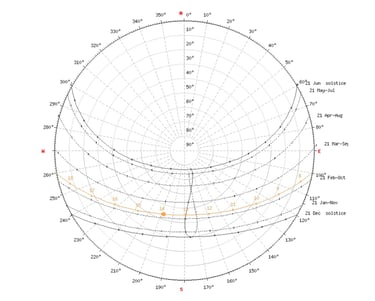

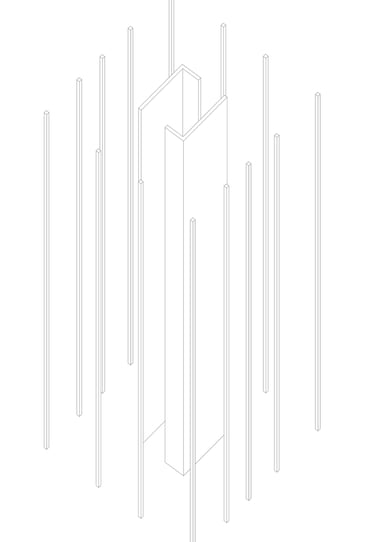

Modules
Modular concrete units (10x10m) with green roofs, a shaded wooden pergola, and tiered seating—all designed with natural integration and functional spaces.
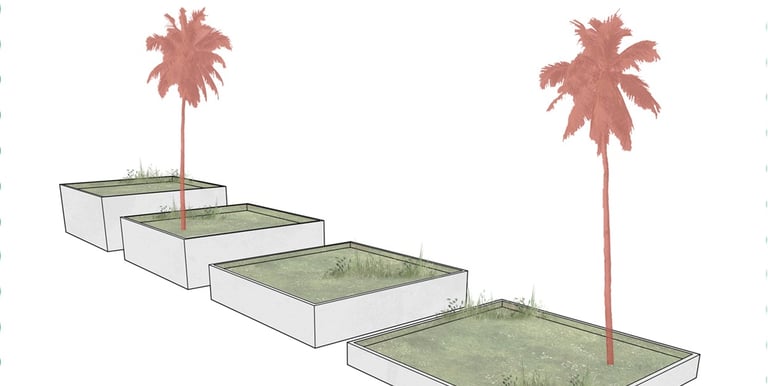

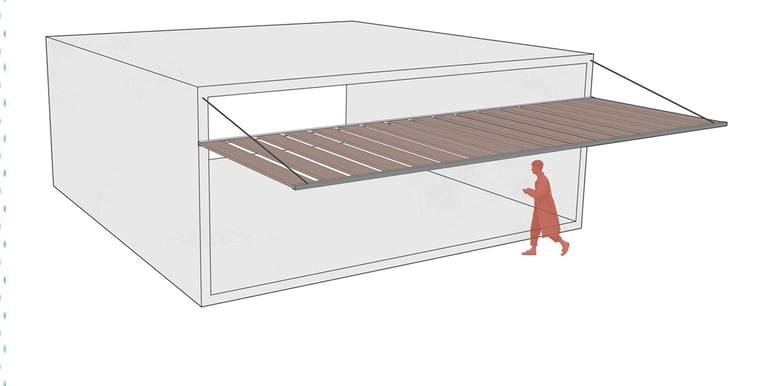

A square-shaped structure measuring 10x10 meters. It is built with reinforced and prefabricated concrete. It has two supports on the sides and is equipped with a cover that allows access or ventilation. This opening occupies a significant portion of the structure's side and features a grid design that permits the entry of light and air. In front of the opening, there is a human figure providing scale to the size of the module.
A square-shaped model measuring 10x10 meters. These models increase in height in a stepped manner. They are constructed with reinforced and prefabricated concrete, and each one features a green roof with vegetation on its surface. The variation in height creates a stepped effect, enabling an interesting distribution of space and vegetation across different levels, with a 1-meter height difference between each.
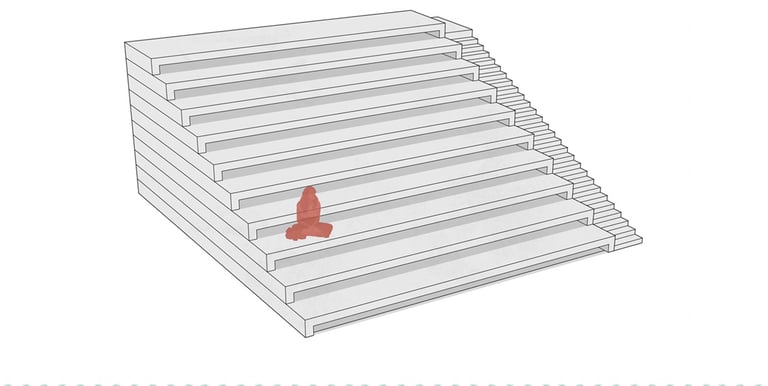

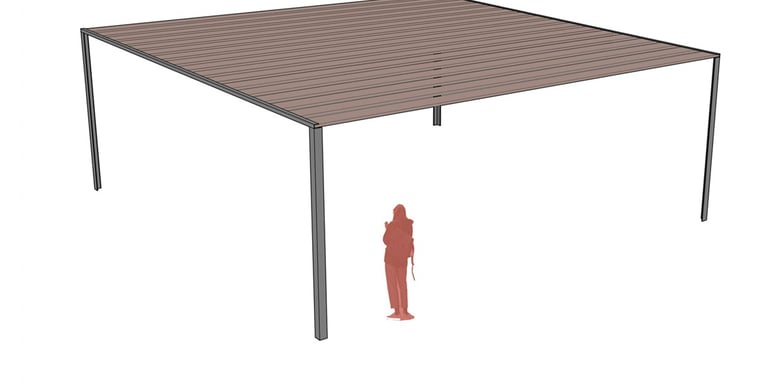

A square pergola measuring 10x10 meters. The pergola is supported by four pillars at the corners and has a wooden grid roof that provides shade while allowing light to pass through. It is designed to create an open and shaded space, ideal for outdoor areas.
A square-tiered seating structure measuring 10x10 meters. It consists of several stepped levels and features a staircase on one side for access to the different tiers. In front of the structure, there is a human figure providing scale to its size. The seating tiers are designed to accommodate seated individuals, and the staircase facilitates movement between levels.
Plans
The drawing set illustrates the project's layout, structure, and functionality through floor plans, sections, and construction details that clarify its spatial organization and design strategies.
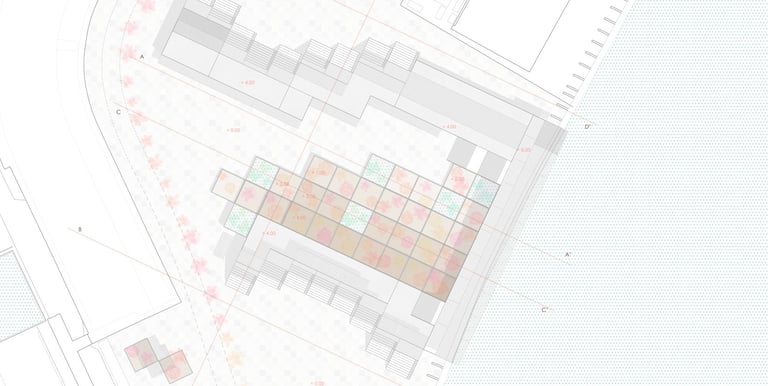


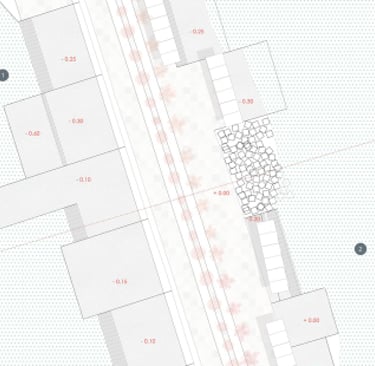
Teraces
Adaptation of the transit area
First floor
Lower section of the tiered seating modules

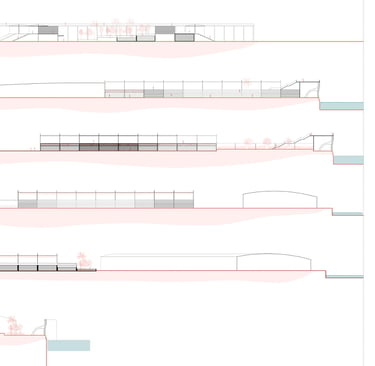
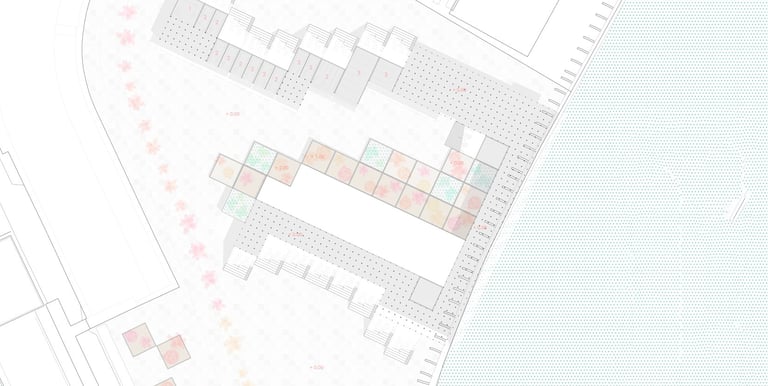

Second floor
Higher section of the tiered seating modules
Sections
Sections of differents areas
Visuals
Photos of the potential final result
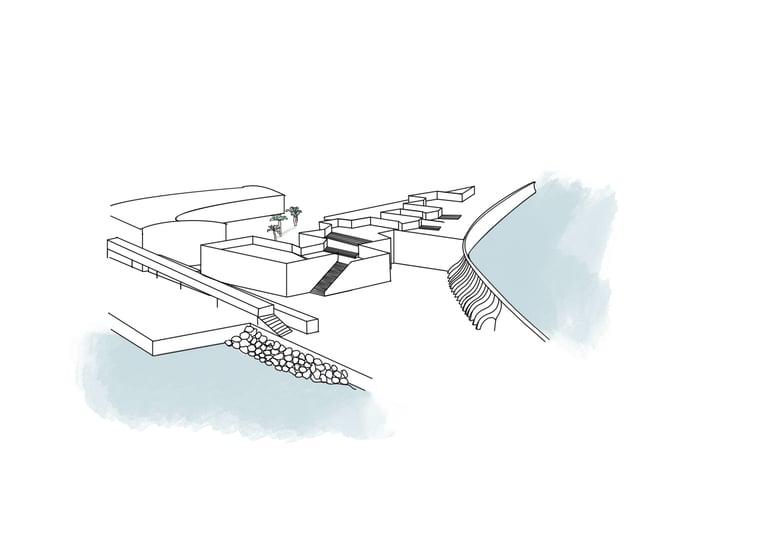
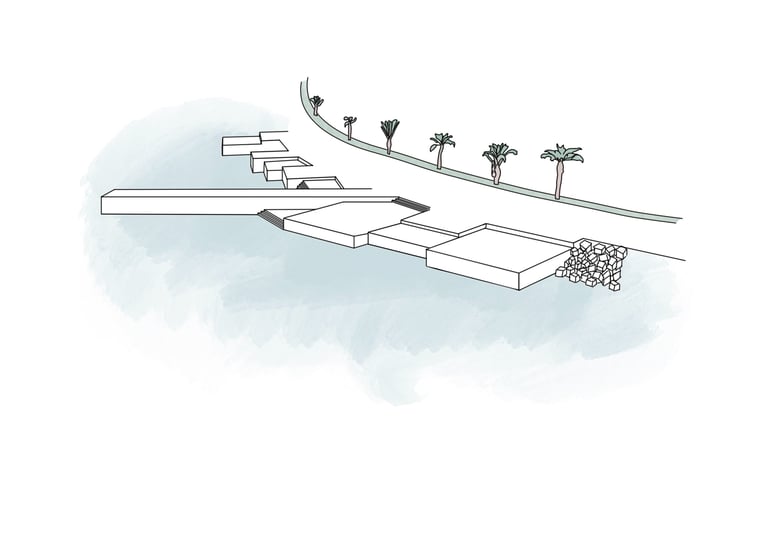
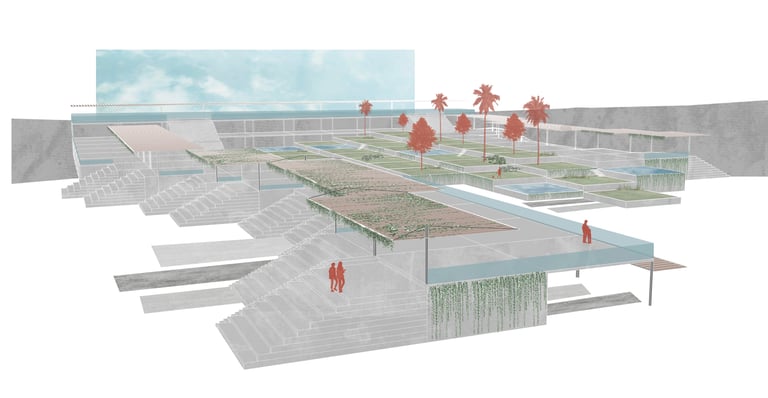
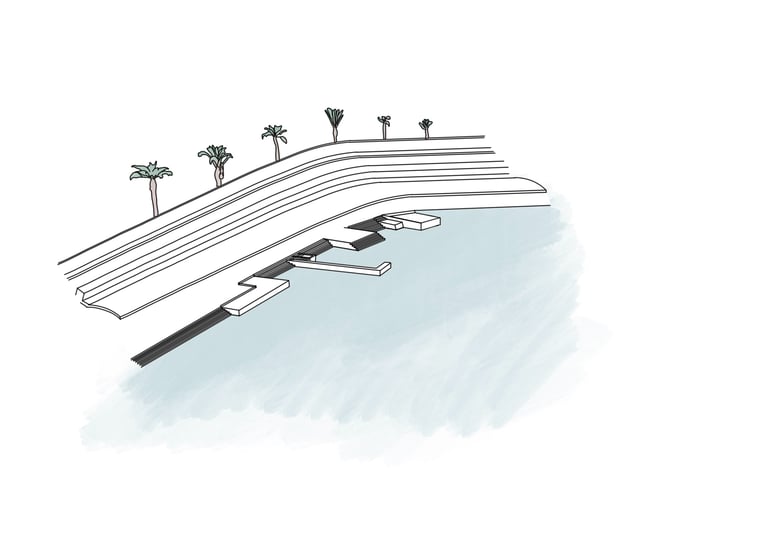
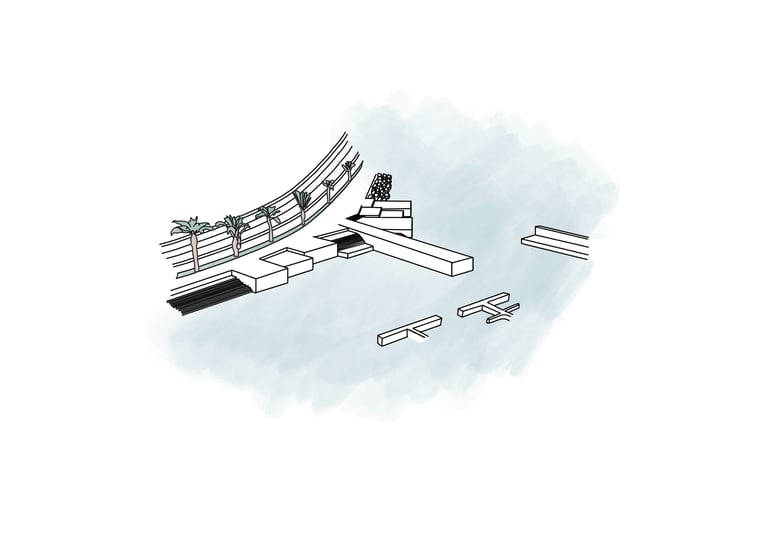





Panels
